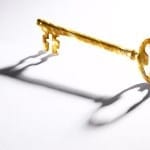I CAME across this compromised sunset while jogging around my neighborhood in Jerez this week. An abandoned foundation jutting out to meet the sun before the horizon, the scene struck me as a dramatic reminder of Spain’s real estate bust and a testament to its economic predicament.
The photo is taken from the park connecting the Alcazar (Arab Fortress) with the Cathedral and the Tio Pepe Gonzalez Byass Bodega. The pleasant area features benches, lines of orange trees, a gazebo, and an open space that hosts a sizeable market on Sundays. It also provides a clear view of the horizon at the exact point where the sun descends, a rare triumph given its low elevation and positioning in the center of the city. This of course makes the park a favorite stopping point for wanderers, dog-walkers, and couples.
Despite the beauty of the vista, I was most taken by the way the exoskeleton of this unfinished building obstructs the sunset. The rays are blocked and forced to merely squint through the empty windows. A pleasant yet marred landscape, it is a constant reminder of the rise and fall of the Spanish economy.
The real estate boom refers to the development craze in which thousands of Spaniards clamored to construct more and more homes and office buildings throughout the country over the last 30 years. The government encouraged the practice and the banks issued significant mortgages and long term loans for prospective buyers. Foreign investment also increased, with many natives of Northern Europe buying up land. This craze inflated the economy, and proved an unsustainable model. Spanish real estate prices rose over 200 percent between 1995 and 2007, rendering many developments unaffordable and many Spaniards stuck with loans they could not shake off. Mirroring a similar housing boom in the United States, in 2008 the Spanish bubble also burst painfully. The supply of homes greatly exceeded the demand and thousands of building projects were abruptly abandoned. Today, one finds deserted foundations like this one all over the country, some 25 percent of all projects constructed between 2000 and 2010.
Eventually, things will probably turn around and a developer will see this building through to completion. The structure will hold carpeting, insulation, and happily employed Spaniards. Curtains will block the windows and the structure will become opaque. The sunset from the park will be lost and only those working in the office will see the horizon. For now, Jerezanos can still sit on the benches under the Arab walls, inhale the damp air from the fermenting grapes, and wait out the economy with their faces to the setting sun. After all, great views cost nothing and the sky cares not for an economic crisis.




“Eventually, things will probably turn around and a developer…”
Things will never turn around. There is only one direction this will continue to go. Any other thoughts are pure denial.
Lewis,
your talking common sense but many who hoped to make money out of residential property don’t want to hear this. The only ones I feel sorry for, caught up in this giant Ponzi scheme are the foreigners who only wanted to end their days in the sun, not make a killing and ordinary Spanish folk who got conned into buying at the top of the market, for the rest I hope they end up living in cardboard city.
The French once had an excellant system for stopping greed and madness of this kind an all encompassing capital gains tax – selling – the first 2 years, 100% capital gains tax and thereafter a sliding scale extending over 16 years.
This left no room at all for carpetbaggers and was the reason buying a house was cheap in France. There are still publications in the English language press here in France suggesting the next ‘hot spot’.
Many English and Irish have been hammered only buying to make money with the market turning against them they ould’nt give a damn about how difficult they made it for ordinary French people to buy a home, this is especially true in Brittany.
You want to make money – gamble in the markets like I do.
The bubble burst before the credit crunch when people became aware they were buying homes that are still not properly legal. 300,000 in Andalucia.
Last year I met people from Belgium, Holland, England and Madrid who would have purchased homes for retirement or holidays. None of them did buy a home as they were scared of investing their life’s savings in a system that does not seem able to guarantee the title of homes. Its in all the papers and on TV in most European countries saying its not safe to invest money in Spanish homes.
The government has had years to put this right but they do nothing except threaten the victims of this massive fraud with demolition orders and cutting off electricity supplies.
I have lived here 7 years so I am rather used to it all and do not worry to much. But now the cat is out of the bag only a very speculative person would buy property and not those who want to live here and contribute to society.